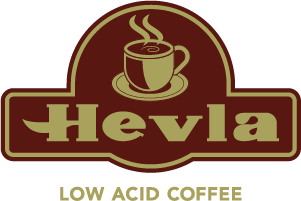
How Well Do You Know Your Coffee?
Coffee is such a ubiquitous beverage these days, almost everyone must have tasted at least one cup in their lifetime. How many of these people, though, truly know what that black liquid inside their cup is all about? We bet a lot of those who’ve been drinking more than one cup a day don’t even know where the coffee story began, or what the beans have been through before they’ve reached the cup. So here’s a brief lesson on the story of coffee.
The Legend
They say it all began with an Ethiopian goatherd in the 9th century. The goatherd, named Kaldi, used to take his goats out to the field each day. These fields had coffee plants growing around, and Kaldi noticed that whenever his goats ate the berries from these plants, they seemed to become more active and did not sleep at night.
Kaldi decided to tell the abbot of a nearby monastery about it. The abbot then took some of the berries and prepared a drink with them. He found out that the drink helped him to stay up during the long periods of evening prayers. He shared the drink with the other monks and soon the story of the coffee spread to the whole region and beyond.
No one can really verify the truth behind this legend, but people accept it for what it is because while it may not be true that a goatherd was the one who discovered coffee, the practice of making a drink out of coffee berries is indeed believed to have begun in Ethiopia and coffee beans were exported from Ethiopia to Yemen.
The Early Coffee Trade
From the early years when coffee was only being traded around the Arab Peninsula among Middle Eastern and African countries, coffee has since scattered its seeds around the world and has been growing for years in other countries in Africa, South and Central America and Asia.
Coffee beans were first taken out of the Middle East in 1670 when a Sufi monk named Baba Budan smuggled seven pieces of seeds to Mysore, India.
Coffee made its way to Europe in 1615 by way of Venice through the active trading activities between Venice and North Africa.
It was the Dutch East India Company that propagated the trade of coffee by importing it in a large scale and they are also responsible for first growing the now famous coffee of Java.
In North America, the advent of coffee was not as successful as it was in Europe. It was only when the Revolutionary War began that coffee became in high demand which pushed the prices up and drove the traders to hoard the product.
Now, Brazil is the top coffee producer in the world with a third of the global production coming from there. Ethiopia, the original source of coffee, now only produces slightly less than five percent of global production.
Coffee Making
Coffee is now grown in the region of the globe called the Coffee Bean Belt. The Coffee Bean Belt is a strip of over 53 countries around the equator between the Tropics of Cancer and Capricorn. This includes the countries that are widely famous for their coffee such as Kenya, Colombia, Brazil, Costa Rica, Yemen, Hawaii and Indonesia. Coffee thrives best in these countries because of the rich land and the tropical climate.
Coffee plants can be quite sensitive. They need a certain balance of rain and sun and shade. The altitude level is also important to the quality of coffee that is produced. Nowadays, coffee seeds are first planted in nurseries to allow them to grow sturdy before they are permanently planted on land.
There are two types of coffee plants. One is the Arabica, which is considered to be the more superior kind, and grows best in higher elevation areas. The second type is the Robusta, grown more for its hardiness and for producing coffee that has a fuller bodied taste. Robusta coffee is able to grow in areas where Arabica cannot grow.
When coffee berries are ripe, they are either handpicked or machine picked. The best way is by handpicking because, although it could be tedious, it ensures the quality of production because only the berries that are in their fully mature stage are picked. Pickers normally work on the trees in a period of 8 to 10 days and the most expert pickers are able to collect up to 200 pounds of coffee berry a day, amounting to about 40 pounds of coffee beans.
Once the berries are picked, they are then either dried out in the sun or fermented in huge water tanks before being dried. Most countries use the dry method especially in areas where water is not in abundance. Fermented coffee beans produce more acidic coffee compared to those that are dried. After this process, the coffee beans are then hulled, polished and sorted before they are exported.
Coffee is roasted in various countries, with many expert roasters being in Europe, thus the popularity of the French and Italian roast variety. Roasting brings the coffee beans to a high temperature of about 400 degrees Fahrenheit, when the caffeol in the beans start to emerge along with its aroma and flavor. At this point coffee is ready for brewing.
Decaffeination and Low-Acid Coffee
Some coffee beans need to undergo more processing prior to roasting in order to come up with different types of coffee such as decaf and low-acid coffee.
Coffee beans are decaffeinated prior to roasting using many methods, the most common being the so-called Swiss process in which the beans are soaked in hot water or steamed and then decaffeinated by using a solvent. Caffeine that is extracted from the beans is purchased by pharmaceutical companies for use in medicines such as analgesics.
Low-acid coffee, meanwhile, is also produced via different methods. Some coffee beans are naturally less acidic than others because of the environmental conditions in which they are grown. Coffee plants grown in lower elevations are typically less acidic than those grown in higher areas. Another reason that some coffee beans are less acidic is in the way they are roasted; beans typically lose their acidity during the roasting process thus beans that are roasted for longer periods, i.e., dark roasts, are less acidic than lighter or medium roasts.
Other coffee beans are specifically treated in order to strip them of some of their acid components. One of the methods is called the Darbovan Improvement Procedure, which is the process used on Hevla coffee. This involves letting the beans go through a high-pressure steaming process to remove their waxy coating. This procedure was developed in Europe over thirty years ago and is a chemical-free method that in no way alters the flavor of the coffee.
Other methods of lowering the acidity of coffee include roasting the beans for a longer period at lower temperatures and using chemical elements to remove the acids.
Some Coffee Trivia
Did you know that when coffee first arrived in Europe in the 1600s it was considered as a Muslim drink and Christians wanted to have it banned so they asked the Pope to evaluate it? Pope Clement VIII tasted the coffee and considered it acceptable to be a Christian beverage, thus allowing it to become more popular in the region.
Did you know that coffeehouses were banned by King Charles II of England in 1675 because he believed that these were the places where rebellious groups convened and conspired against him?
Did you know that the term “cup of Joe” was coined during the World War II when American servicemen called GI Joes were avid coffee drinkers?
Did you know that the Americano type of coffee evolved during the World War II because members of the US Armed forces liked to drink their espresso with water in them to dilute the flavor?
Did you know that Italy, despite being known for great coffee, does not actually grow coffee? The close association of Italy with coffee arises from their love for a great brew and their dedication to produce high quality roasts.
Did you know that despite the popularity of the Mocha as coffee with chocolate syrup, the Mocha Java roast does not actually contain chocolate? Mocha Java is a roast which combines coffee beans from Mocha, Yemen and Java, Indonesia, thus the name.
Did you know that the United States consumes the largest amount of coffee which is estimated at over 400 million cups in a day?
Did you know that you can still drink coffee even when you have acidity related problems or have been diagnosed with GERD? Low-acid coffee was specially designed to allow people to drink their favorite beverage without experiencing stomach upsets, heartburns and other symptoms related to GERD.


Comments
Thea Smith:
Can you please tell me what the Ph level is of your low acid coffee?
Thank you,
Thea
Aug 11, 2018
Julie:
I have interstitial cystitis. There are certain foods I need to avoid is coffee. I need a low acidic or no acidic coffee. I was thinking about ordering yours.
Aug 11, 2018
ingrid k:
I am looking for a good naturally grown low acid, dark roast espresso coffee bean.
Aug 11, 2018
Leave a comment